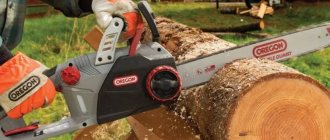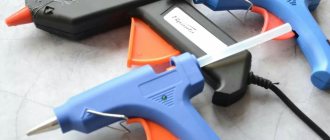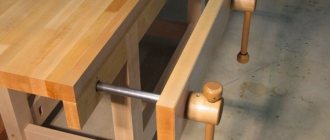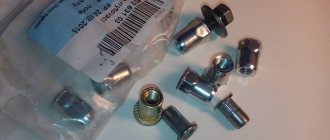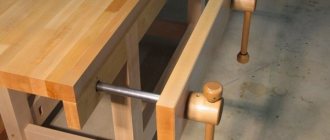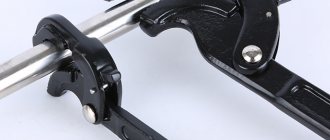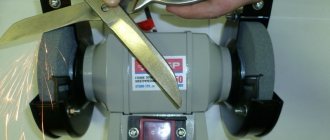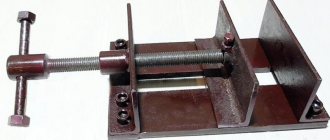During operation, the working tool processes metal, which moves relative to it in several planes. The master in many cases does not control the movement. The programmed machine itself carries out all the necessary manipulations. To hold the workpiece, machine vices for milling machines have been developed.
Machine vices for milling machines
Installing a milling vice
Before placing any vise on the machine table, be sure to clear the table of any shavings. If you have a T-slot table that you're mounting the vise on, you'll probably want to move the vise around for better placement as well.
Vise alignment is the procedure of using an indicator to move the vise jaw (you want a fixed jaw, not a movable one) so that you can adjust the position of the vise until the reamer shows that the vise jaw is parallel to the axis as it moves.
Learning to "square" a machine vise is one of those basic skills that every machinist should learn early on.
Place the machine vise on the milling machine table
A machine vise is usually attached to the milling machine table.
I used the step clamps that came with my table clamp kit until I purchased my Glacern 6″ Premium Vise:
Step clamps
The new vise came with a nice clamping kit that I like much better:
- New set of clamping jaws
The new clamps are simpler and more compact. It also helps that I switched to a couple of socket head screws for these clamps.
Once the vise is properly installed and secured, the next issue is proper use. In most cases we want the workpiece to be fairly high in the clamps. This is done both to provide access to the workpiece and because it allows for greater repeatability; the smaller the part being machined, the less room there is for unevenness to affect processing.
We typically set the workpiece high in the jaws, either with a parallel vise set or because we have the jaws set in a vise whose step is machined quite high on the jaws. We can either process the step ourselves (in the case of soft sponges), or purchase sponges with the step already processed.
Manual milling fixture
The rotary vice, thanks to the rotating disk, has a rotation radius of 360 degrees. Together with them, the part clamped in them also turns. The disk is fixed using a threaded rod, as well as a static regulator located behind the rotating part. To improve fixation, a recess is provided in the rotating mechanism.
A hand vice is fixed on top of the disk. They are equipped with 2 plates with damping material. The rails are located perpendicularly. These are guides along which one of the plates moves.
A threaded rod is used as a regulating element. It is welded to the central part of the plate from the inside. On the other side of the rod there is a handle. This end is threaded through a tightly secured regulator with a thread on the inside.
The distance between the vise plates is about 1 mm, with the rod fully twisted. This is necessary in order not to damage the vice.
Vise designs can come in different modifications. For example, with 2 movable plates. The device has a complex mechanism. In other cases, a lever is used instead of a handle, as well as a transfer unit.
As a rule, such a vice device is used in small workshops. Locksmith tools can be quickly repaired. It is easy to disassemble or install on the machine table. It is convenient and practical to use.
Vise parallels and jaw steps
Setting the workpiece on the outside of the vice
Increased rigidity
Increasing rigidity is always important. This operation uses two 2-4-6 blocks as a vise jaw extension to better hold the plate at the end.
Using several vices, jaws, and modifying the vice
There's an old rule that if you want to get the most out of your machine, you need to use every square inch on the table. Most machine tables can accommodate multiple vises, and this is very common.
Our photo above of two vices shows one such setup. It is not uncommon to see four or even six vises on a large router. Bigger is better because the more vises you have, the more parts you can handle before machining has to stop so the operator can load new workpieces.
If several vices are installed on the machine, it is convenient if they coincide in all main dimensions within the tolerance. This way, if you duplicate the setup and get the vise in a different order, you'll be fine. Most vise manufacturers will sand the vise for you, or you can do it yourself using a grinder.
Another trick that is possible with two vises is to use the jaws for two vises when working with very long parts:
Connecting two vices with one set of jaws
I made this kit for a project that required machining a thin aluminum panel for some electronics and they worked great.
Selection principles
When choosing devices for fastening workpieces, take into account the following parameters:
- performing certain functions with a vice;
- execution of the fastening mechanism;
- the material from which the jaws were made, as well as their sizes for specific parts;
- nominal pressure on the part when fastening;
- maximum propeller stroke at full extension;
- the mass of the vice is selected in accordance with the dimensions of the machine’s work table;
- type of drive mechanism.
Advantages and disadvantages
The benefits include:
- high force allows you to hold large workpieces during processing;
- the body, made of high-quality steel, can withstand maximum loads;
- the frame is protected from corrosion;
- with the help of a milling vice they perform high-precision work;
- processing soft material without damaging it.
The disadvantages include:
- use of pads under the jaws to prevent the part from jamming;
- vertical distortion of the jaws;
- the use of a complex drive for movement.
Manufacturers and cost
Milling rotary vices are made as an additional accessory for machine tools. Produced by domestic and foreign companies. The price range starts from 2,000 rubles and reaches 30,000 rubles.
Double machine vice for machinist
By spreading three or four vises across the router table, you've taken advantage of the X axis pretty well. But there's an opportunity to better utilize the Y axis with a double vise:
Double vice
A typical two-station vise is like two vises in one: you can put two parts in instead of one. By using double vises wisely, you can really increase the number of parts that can be processed on your machine table at one time.
Hydraulic vice type
Hydraulic vices provide the greatest clamping value. Their operating principle is the same as that of pneumatic ones, only water is used instead of air. If it is necessary to develop particularly high force, a viscous liquid is poured. Such devices are connected to a reservoir where the liquid used is filled. The container is not open.
Vices are expensive. Therefore, they are used in enterprises manufacturing high-tech products. They can be located on automated machines.
Special milling vice
By using multiple vises, double vises, moving jaws, and even using jaws spanning multiple vises, quite a lot is possible. In fact, you can even use a vice to attach other fastening devices. A very common trick is to place small ones in a machinist's vice to turn the jaws in a different direction:
Small vices in big ones
You can also create small plate fixtures that are designed to fit in a vise, creating what is often called a "vice tray" since individual plate fixtures can be pulled out of the vise in the same way as pallets.
Vise Pallets are simply small insert attachments designed to be held in the jaws of a router vise.
In general, solutions such as pallet vises are designed to allow the vise to be left on the machine in shops where the flexibility and ease of clamping of the vise is ideal for most of their jobs.
Tormah made a great suggestion on his blog which was to use a Sine (Toolmaker) vise as a vise tray.
Purpose
In metal-cutting machines, basically all movements are carried out by the working tool. Performing work on the opposite side makes the task more difficult, and the action of the tool falls out of the worker’s field of vision.
Milling vices are used in the following situations:
- to move the workpiece during processing with the front side facing the master, while it can quickly identify shortcomings in the operation of the equipment;
- when making a part in the shape of a perfect circle;
- when moving the workpiece 90°.
Fixation devices are used:
- in a private workshop in the manufacture of various accessories, for fitting plastic windows;
- In industrial production, vices for milling machines are used in the manufacture of parts of complex shapes.
Custom soft and hard jaws increase clamping flexibility in the vise
Soft jaws on a router vise are a very popular form of clamping. The idea is to create aluminum vise jaws (since aluminum is softer than ferrous metals, hence the name) that are tailored to specific applications. Sometimes it is preferable to use a more durable material, in which case we use Hard Jaws.
Here are some examples:
Sponges for round parts
Use soft sponges to find and hold the large round part. You can often see a "V" shape, but it doesn't support the piece as well as soft jaws.
Dovetail
As mentioned above, we don't want to grab the entire height of the part with the jaws. A particularly fine grip can be achieved with dovetail jaws. The small red circle indicates the dovetail, which prevents the workpiece from sliding upward during heavy cutting.
Special soft sponges
Here's a typical setup. The part is cut from the block on the left (these are the same Carvesmart dovetail cams). The part is then turned over in a set of special soft jaws on the right, which are a mirror image of the part. The end mill then removes some of the flat stock left from the original material (this has already happened in this photo).
Setting the workpiece in a vice at a precise angle
Machine vice. Quick replacement of jaws
I think you can see that vise routing using custom jaws can be a powerful solution for securing workpieces. So powerful that most work is done with this method alone. Manufacturers spend a lot of time creating custom jaws and often put them in a storage box to be used for other jobs or in case a customer re-orders a part.
Even though the vise spends most of its time on the table, we still have a bottleneck in setting the time it takes to change the vise jaws. You may have seen this coming, but there are also plenty of quick-change vises available. The Carvesmart jaws we pictured are one variety, but there are many more. Judicious use of an air ratchet and socket head screws can also speed up the jaw replacement job.
Pneumatic Rotary Tool
The basis of the pneumatic design is a rotating disk on which the machine vice is mounted.
The basis of the control structure is a sealed pipe. One end of it is connected to a movable plate in its central, outer part. The second is connected to a pump - manual or electric.
If it is necessary to increase the clamping force, air is pumped into the pipe. As a result, the plate moves forward under its pressure. When the force weakens, air is released, which is distilled into a second tube connected to another pump that performs the opposite function.
A pneumatic machine creates significantly more force than a manual one.

